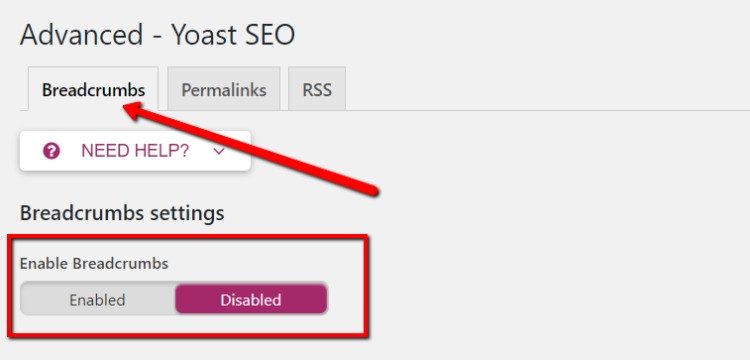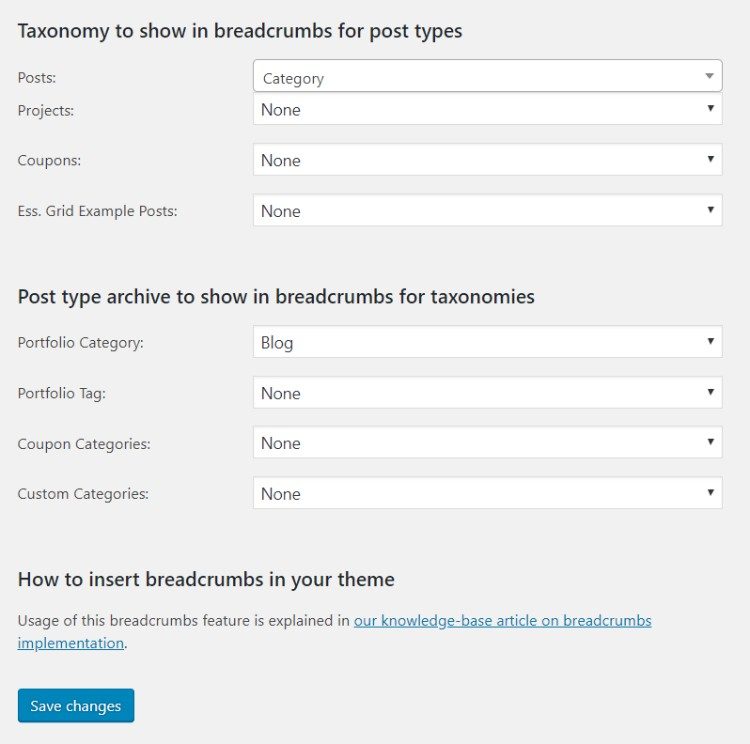¿Cuándo fue la última vez que siguió un rastro de migas de pan? ¿La solución a esa pregunta? Probablemente en Internet, por lo que debería empezar a pensar en cómo agregar migas de pan a WordPress.
Se ha seguido un rastro literal de migas en los cuentos de hadas y quizá por su perro en casa, pero las migas de pan de la vida real generalmente se refieren a pasos importantes de navegación en un portal Web, sobre todo cuando se habla de un sitio de comercio electrónico con miles o cientos de productos
Comprender las migas de pan es bastante sencillo y el procedimiento de agregarlas a su sitio no toma más de unos minutos. Si desea conseguir más información sobre las rutas de navegación y la ubicación de estas pequeñas funciones valiosas en su sitio, siga leyendo.
What are WordPress breadcrumbs?
If you've bought something online, chances are you've at least seen breadcrumbs. They are the series of navigation links that are connected to each other to show you precisely where you have navigated in a web portal.
Breadcrumbs are similar to standard navigation menus, except that they are formed as you move through a site. The breadcrumb links form a link structure, with a hierarchy showing the first page you visited, followed by the next, the next, and the next.

En realidad, se puede hallar un ejemplo de rutas de navegación en R Digital marketing, cuando hace clic en la pestaña Temas en el menú de navegación y después selecciona una categoría de temas.
Como se mencionó, es común ver rutas de navegación en los sitios de comercio electrónico, como en Amazon, donde es viable que esté cavando en un pozo profundo de categorías y tipos de productos.
La mayoría de las veces, estas rutas de navegación se muestran en la parte de arriba de un portal web, y el Username puede hacer un clic en cualquiera de los links de la jerarquía de rutas de navegación para retroceder y ver el historial de navegación.
Why are breadcrumbs important?
Most companies choose to use breadcrumbs for two reasons:
- Breadcrumbs ayuda a los usuarios a navegar por su portal web.
- Breadcrumbs puede fomentar tu SEO.
For the user experience, sometimes a navigation menu is not enough to guide the user and make them comfortable with the location on your site.

Best Buy tiene cientos de categorías de productos y productos. Cuando un client comienza a buscar una computadora portátil, inmediatamente se mete en la trampa de características, categorías, marcas y productos específicos.
If that person wanted to go back, the navigation menu (or search bar) would be useless, since it would normally take them too far back. Instead, it is easier for the customer to see which pages have been consulted and then click on the page to which it makes the most sense to return.
Finalmente, la mayoría de las marcas utilizan migas de pan cuando el contents se vuelve demasiado abrumador para examinarlo con el menú de navegación. De este modo, si tiene cientos de productos, archivos o publicaciones de Blog, las rutas de navegación pueden serle de utilidad.
Esto además se relaciona con la parte de SEO, puesto que las rutas de navegación ayudan a mover los search engines a través de su colección de páginas. Esto fortalece su estructura de backlinks internos, por lo que los bots pueden rastrear más fácilmente y reconocer su sitio como uno con una gran user experience.
How to add Breadcrumbs to WordPress through a theme
Once you've decided that breadcrumbs are suitable for your web portal, it's time to activate them from scratch or add breadcrumbs to WordPress for an existing site.
If you're just creating a new content-heavy web portal, it's wise to go for a WordPress theme with built-in breadcrumbs. For example, the following WordPress themes already have breadcrumbs as their main feature:
- Total - A multipurpose theme with breadcrumbs.
- Knowledge base - You guessed it. A knowledge base WordPress theme with breadcrumbs.
- SmartMag - An online magazine issue with breadcrumbs.
- Flatsome - A popular e-commerce option with breadcrumbs.
- Shopkeeper - Another great online store theme with breadcrumbs.
Actually, it seems that most of the best ecommerce themes have default breadcrumbs. After all, developers should assume that you could be selling large amounts of products, so it makes sense. Regardless, do your research and test demos before committing to a topic.
Enabling Breadcrumbs in WordPress with a plugin
If you want to add breadcrumbs to a current site and the idea of changing the subject doesn't make any sense for your brand, you're still in luck.
The Yoast SEO plugin is a tool that you should probably have already installed on your site (for SEO purposes). SEO is great, but the brilliant developers at Yoast have tackled an obstacle that many WordPress website owners encounter. Eventually they have so much content that a hierarchy of breadcrumbs would make sense. The only problem is that your theme doesn't have a breadcrumb feature.
So Yoast took the wheel and made it simpler for all of us. Here's how to add breadcrumbs to WordPress in just a few minutes.
Step 1: add the Yoast SEO plugin to your web portal

If you already have Yoast installed and activated, skip this step. For those without Yoast, go to plugin page to download and install it. You can also do this in your WordPress dashboard by going to Plugins> Add New, then type "Yoast SEO" in the search bar.
While it is great that Yoast SEO offers the functionality to get breadcrumbs on your site, we also suggest that you learn about Yoast SEO features. Not only will it improve your search engine ranking, but it will also inform you better about how to do it.
Step 2: activate advanced settings
The breadcrumb settings are not initially displayed in Yoast, so you have to start by clicking on the Control Panel tab.

Select the Features tab.

Scroll down to find the Advanced Settings Pages heading. By default, Yoast does not activate it. Thus, click the button to display On.

After that, you will see a few more options on the SEO tab. Go to the Advanced tab to take it a step further.

The Breadcrumbs option is the first to appear, so you can look below to enable the Breadcrumbs.

Once enabled, various other settings are shown below. Most of these fields are populated with the default settings, so feel free to leave them as is if you wish. Regardless, you may want to change the way your separator works or perhaps something like making the last page in the breadcrumbs list bold.

The taxonomía de sus rutas de navegación depende de lo que establezca para ciertos tipos de publicaciones. Puede dejarlos en blanco si no tiene ningún interés en tener rutas de navegación para las publicaciones, pero además tiene la opción de editarlas. Asegúrese de hacer un clic en el botón Guardar antes de salir de esta página.

Step 3: insert the Breadcrumbs code into your site files
The breadcrumbs won't appear until you insert a little code on your site. Start by copying the following code:
<?php
if ( function_exists('yoast_breadcrumb') ) {
yoast_breadcrumb('
<p id="breadcrumbs">','</p>
');
}
?>You must place your code where you want the breadcrumbs to appear. Some of the more common places include:
- In your single.php file.
- In your page.php file (above the page title).
- Al final del archivo header.php.
Note: We strongly suggest using a WordPress child theme for any changes to the main theme files. This way, you can still install updates to your theme without giving up your customizations.
Some persons además encuentran que el siguiente código abreviado es la mejor manera de buscar publicaciones y páginas individuales:
That's it!
By now, you should have found a successful theme or used a plugin to add breadcrumbs to WordPress. If you have any other questions, check out this Yoast post for handling that code. If not, it should be set up with breadcrumbs on your web portal!
You can also leave us a comment in the next section; We will be happy to help you with any questions you may have about adding breadcrumbs to WordPress for your readers.






